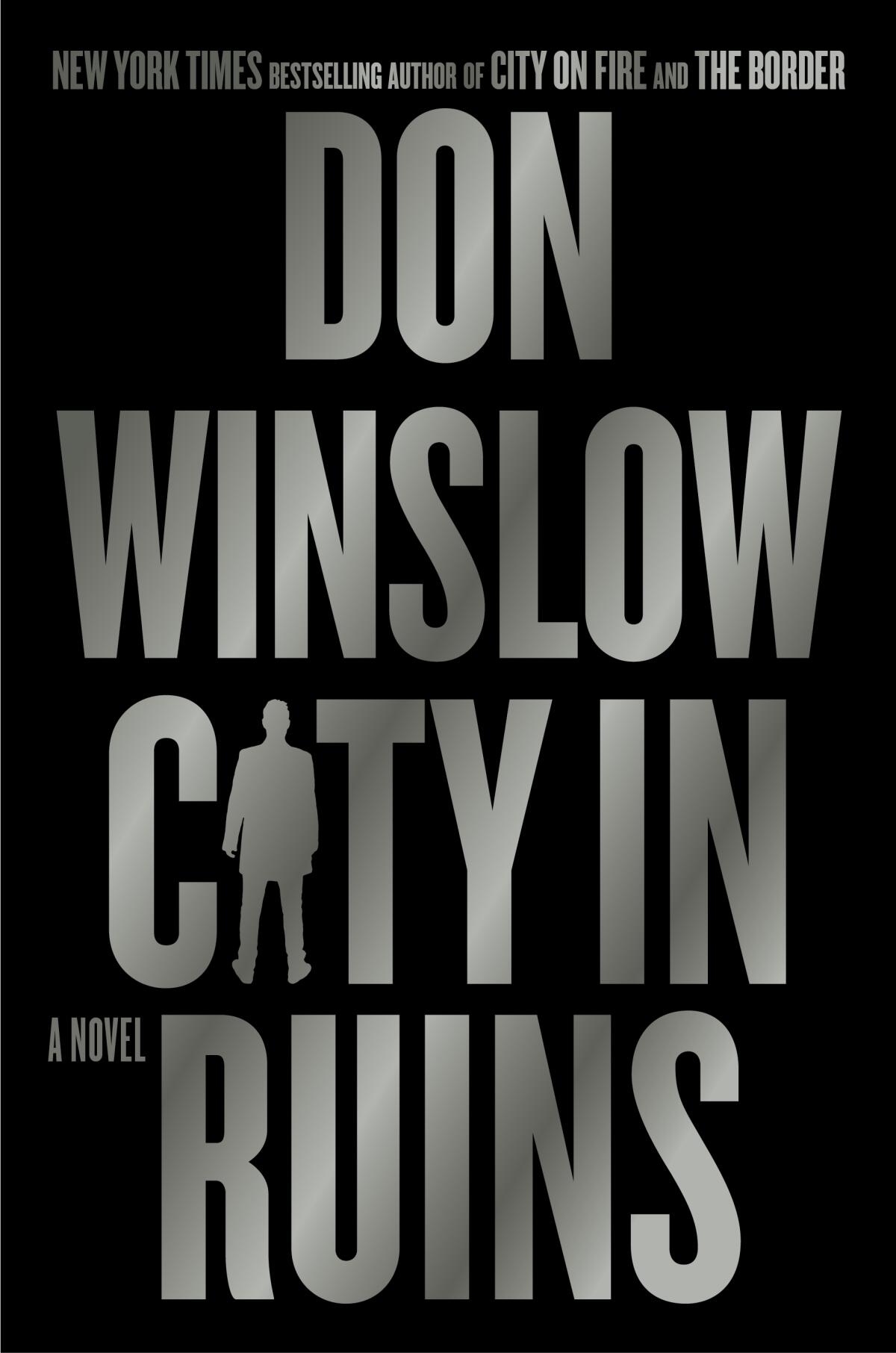

How to plan, structure and write every chapter in your PhD
In this collection, we’ll walk you through each chapter of your thesis. You’ll learn what goes where and how it fits together.

The PhD Discussion Chapter: What It Is & How To Write It
Your PhD discussion chapter is your thesis's intellectual epicenter. Think of it as the scholarly equivalent of a courtroom closing argument, where you summarise the evidence and make your case. Perhaps that’s why it’s so tricky - the skills you need in your...

Everything you wanted to know about structuring your PhD but were too afraid to ask
Understanding how to structure your PhD is tough. It helps to break it down into four distinct sections. In this guide, we explain how.

How to find the thread that runs through your PhD thesis
You probably worry about finding the thread that runs through the PhD thesis. In this guide we walk you through what’s required.

How to edit a PhD thesis (without going mad)
Your thesis takes a lot of time to research, ideate, and write. Here’s how to properly edit a PhD thesis such that you impress your examiners and achieve even greater success.

The 9 most effective ways to achieve PhD success
Writing a PhD is physically, intellectually and emotionally daunting. You may spend each day doubting yourself, not sure if you’re making the right choices and unsure whether you’ve got what it takes. During my life, I’ve helped thousands of PhD students like...

How To Structure A PhD Thesis
Struggling to understand what goes where? Let us walk you through a non-nonsense guide that’ll teach you how to structure a PhD thesis.

The difference between empirical and discussion chapters (and how to write them)
There is a very important distinction that needs to be made between the empirical and discussion sections/chapters. It is a common misconception that the empirical chapters are the place for your analysis. Often this confuses the reader.

Five tips to improve your PhD thesis
Regardless of what stage of the writing process you are at, there are five overarching tips you need to keep in mind if you want to improve your PhD thesis.

What are you doing and how are you doing it? Articulating your aims and objectives.
How long does it take the person reading your thesis to understand what you’re doing and how you’re doing it? If the answer is anything other than ’in the the opening lines of the thesis’, keep reading.

Learn how to write a PhD proposal that will stand out from the rest
When stripped down to its basic components, the PhD proposal explains the what and the why of your research. What it will be about and why it will be important.

Easily understand how to write a PhD thesis introduction
Get the introduction right and the rest of your dissertation will follow. Mess it up and you’ll be struggling to catch up. The introduction is the place to factually recount what it is you will be discussing in the thesis. Learn more in this detailed guide.

Last impressions count – writing your PhD thesis conclusion
The conclusion is the last thing your examiner will read before they write their viva report. You need to make sure it stands out.

What is a dissertation abstract and how do I write one for my PhD?
Don’t underestimate how hard it is to write a PhD thesis abstract. When I wrote mine I though it’d be straightforward. Far from it. It’s tricky. You have to condense hundred of pages and years of work into a few hundred words.

Russian (dolls) to the rescue – how to structure an argument in your PhD
At the core of the PhD are arguments. Lots of them. Some more important and some very specific. When you understand how to structure an argument, your thesis reads clearly and logically. If you don’t the reader ends up confused and your thesis suffers.

Drowning in a sea of authors – How to be critical in a PhD literature review.
Don’t get lost in a sea of authors when you write your PhD literature review. Instead be critical. In this guide we explain how.

Wrestling an elephant into a cupboard: how to write a PhD literature review in nine easy steps
When I was writing my PhD I hated the literature review. I was scared of it. I thought it would be impossible to grapple. So much so that it used to keep me up at night. Now I know how easy it can be and I’m sharing my top tips with you today.

A Template To Help You Structure Your PhD’s Theoretical Framework Chapter
In this guide, I explain how to use the theory framework template. The focus is on the practical things to consider when you’re working with the template and how you can give your theory framework the rockstar treatment.

How To Structure A PhD With Our PhD Writing Template
Our PhD Writing Template allows you to visualise your PhD on one page. Here we explain how to fill it in and how it can help you structure each chapter.

Eureka! When I learnt how to write a theoretical framework
The theoretical framework is so important, but so misunderstood. Here we explain it is in simple terms: as a toolbox.
Explore Other PhD Knowledge Base Collections
Eight collections of free resources to help you along the phd journey.

Mastering your theory and literature review chapters

How to structure and write every chapter of the PhD

How to stay motivated and productive

Techniques to improve your writing and fluency

Advice on maintaining good mental health

Resources designed for non-native English speakers

Explore our back-catalogue of motivational advice
Each week we send out a short, motivational email to over 4,000 students. Here you can sign up and access the archive.

A free one-page PhD structure template

Tips for writing a PhD dissertation: FAQs answered
From how to choose a topic to writing the abstract and managing work-life balance through the years it takes to complete a doctorate, here we collect expert advice to get you through the PhD writing process
Campus team
Additional links.

You may also like

Popular resources
.css-1txxx8u{overflow:hidden;max-height:81px;text-indent:0px;} Emotions and learning: what role do emotions play in how and why students learn?
A diy guide to starting your own journal, universities, ai and the common good, artificial intelligence and academic integrity: striking a balance, create an onboarding programme for neurodivergent students.
Embarking on a PhD is “probably the most challenging task that a young scholar attempts to do”, write Mark Stephan Felix and Ian Smith in their practical guide to dissertation and thesis writing. After years of reading and research to answer a specific question or proposition, the candidate will submit about 80,000 words that explain their methods and results and demonstrate their unique contribution to knowledge. Here are the answers to frequently asked questions about writing a doctoral thesis or dissertation.
What’s the difference between a dissertation and a thesis?
Whatever the genre of the doctorate, a PhD must offer an original contribution to knowledge. The terms “dissertation” and “thesis” both refer to the long-form piece of work produced at the end of a research project and are often used interchangeably. Which one is used might depend on the country, discipline or university. In the UK, “thesis” is generally used for the work done for a PhD, while a “dissertation” is written for a master’s degree. The US did the same until the 1960s, says Oxbridge Essays, when the convention switched, and references appeared to a “master’s thesis” and “doctoral dissertation”. To complicate matters further, undergraduate long essays are also sometimes referred to as a thesis or dissertation.
The Oxford English Dictionary defines “thesis” as “a dissertation, especially by a candidate for a degree” and “dissertation” as “a detailed discourse on a subject, especially one submitted in partial fulfilment of the requirements of a degree or diploma”.
- Ten platinum rules for PhD supervisors
- Fostering freedom in PhD students: how supervisors can shape accessible paths for doctoral research
- Lessons from students on effective research supervision
The title “doctor of philosophy”, incidentally, comes from the degree’s origins, write Dr Felix, an associate professor at Mahidol University in Thailand, and Dr Smith, retired associate professor of education at the University of Sydney , whose co-authored guide focuses on the social sciences. The PhD was first awarded in the 19th century by the philosophy departments of German universities, which at that time taught science, social science and liberal arts.
How long should a PhD thesis be?
A PhD thesis (or dissertation) is typically 60,000 to 120,000 words ( 100 to 300 pages in length ) organised into chapters, divisions and subdivisions (with roughly 10,000 words per chapter) – from introduction (with clear aims and objectives) to conclusion.
The structure of a dissertation will vary depending on discipline (humanities, social sciences and STEM all have their own conventions), location and institution. Examples and guides to structure proliferate online. The University of Salford , for example, lists: title page, declaration, acknowledgements, abstract, table of contents, lists of figures, tables and abbreviations (where needed), chapters, appendices and references.
A scientific-style thesis will likely need: introduction, literature review, materials and methods, results, discussion, bibliography and references.
As well as checking the overall criteria and expectations of your institution for your research, consult your school handbook for the required length and format (font, layout conventions and so on) for your dissertation.
A PhD takes three to four years to complete; this might extend to six to eight years for a part-time doctorate.
What are the steps for completing a PhD?
Before you get started in earnest , you’ll likely have found a potential supervisor, who will guide your PhD journey, and done a research proposal (which outlines what you plan to research and how) as part of your application, as well as a literature review of existing scholarship in the field, which may form part of your final submission.
In the UK, PhD candidates undertake original research and write the results in a thesis or dissertation, says author and vlogger Simon Clark , who posted videos to YouTube throughout his own PhD journey . Then they submit the thesis in hard copy and attend the viva voce (which is Latin for “living voice” and is also called an oral defence or doctoral defence) to convince the examiners that their work is original, understood and all their own. Afterwards, if necessary, they make changes and resubmit. If the changes are approved, the degree is awarded.
The steps are similar in Australia , although candidates are mostly assessed on their thesis only; some universities may include taught courses, and some use a viva voce. A PhD in Australia usually takes three years full time.
In the US, the PhD process begins with taught classes (similar to a taught master’s) and a comprehensive exam (called a “field exam” or “dissertation qualifying exam”) before the candidate embarks on their original research. The whole journey takes four to six years.
A PhD candidate will need three skills and attitudes to get through their doctoral studies, says Tara Brabazon , professor of cultural studies at Flinders University in Australia who has written extensively about the PhD journey :
- master the academic foundational skills (research, writing, ability to navigate different modalities)
- time-management skills and the ability to focus on reading and writing
- determined motivation to do a PhD.

How do I choose the topic for my PhD dissertation or thesis?
It’s important to find a topic that will sustain your interest for the years it will take to complete a PhD. “Finding a sustainable topic is the most important thing you [as a PhD student] would do,” says Dr Brabazon in a video for Times Higher Education . “Write down on a big piece of paper all the topics, all the ideas, all the questions that really interest you, and start to cross out all the ones that might just be a passing interest.” Also, she says, impose the “Who cares? Who gives a damn?” question to decide if the topic will be useful in a future academic career.
The availability of funding and scholarships is also often an important factor in this decision, says veteran PhD supervisor Richard Godwin, from Harper Adams University .
Define a gap in knowledge – and one that can be questioned, explored, researched and written about in the time available to you, says Gina Wisker, head of the Centre for Learning and Teaching at the University of Brighton. “Set some boundaries,” she advises. “Don’t try to ask everything related to your topic in every way.”
James Hartley, research professor in psychology at Keele University, says it can also be useful to think about topics that spark general interest. If you do pick something that taps into the zeitgeist, your findings are more likely to be noticed.
You also need to find someone else who is interested in it, too. For STEM candidates , this will probably be a case of joining a team of people working in a similar area where, ideally, scholarship funding is available. A centre for doctoral training (CDT) or doctoral training partnership (DTP) will advertise research projects. For those in the liberal arts and social sciences, it will be a matter of identifying a suitable supervisor .
Avoid topics that are too broad (hunger across a whole country, for example) or too narrow (hunger in a single street) to yield useful solutions of academic significance, write Mark Stephan Felix and Ian Smith. And ensure that you’re not repeating previous research or trying to solve a problem that has already been answered. A PhD thesis must be original.
What is a thesis proposal?
After you have read widely to refine your topic and ensure that it and your research methods are original, and discussed your project with a (potential) supervisor, you’re ready to write a thesis proposal , a document of 1,500 to 3,000 words that sets out the proposed direction of your research. In the UK, a research proposal is usually part of the application process for admission to a research degree. As with the final dissertation itself, format varies among disciplines, institutions and countries but will usually contain title page, aims, literature review, methodology, timetable and bibliography. Examples of research proposals are available online.
How to write an abstract for a dissertation or thesis
The abstract presents your thesis to the wider world – and as such may be its most important element , says the NUI Galway writing guide. It outlines the why, how, what and so what of the thesis . Unlike the introduction, which provides background but not research findings, the abstract summarises all sections of the dissertation in a concise, thorough, focused way and demonstrates how well the writer understands their material. Check word-length limits with your university – and stick to them. About 300 to 500 words is a rough guide – but it can be up to 1,000 words.
The abstract is also important for selection and indexing of your thesis, according to the University of Melbourne guide , so be sure to include searchable keywords.
It is the first thing to be read but the last element you should write. However, Pat Thomson , professor of education at the University of Nottingham , advises that it is not something to be tackled at the last minute.
How to write a stellar conclusion
As well as chapter conclusions, a thesis often has an overall conclusion to draw together the key points covered and to reflect on the unique contribution to knowledge. It can comment on future implications of the research and open up new ideas emanating from the work. It is shorter and more general than the discussion chapter , says online editing site Scribbr, and reiterates how the work answers the main question posed at the beginning of the thesis. The conclusion chapter also often discusses the limitations of the research (time, scope, word limit, access) in a constructive manner.
It can be useful to keep a collection of ideas as you go – in the online forum DoctoralWriting SIG , academic developer Claire Aitchison, of the University of South Australia , suggests using a “conclusions bank” for themes and inspirations, and using free-writing to keep this final section fresh. (Just when you feel you’ve run out of steam.) Avoid aggrandising or exaggerating the impact of your work. It should remind the reader what has been done, and why it matters.
How to format a bibliography (or where to find a reliable model)
Most universities use a preferred style of references , writes THE associate editor Ingrid Curl. Make sure you know what this is and follow it. “One of the most common errors in academic writing is to cite papers in the text that do not then appear in the bibliography. All references in your thesis need to be cross-checked with the bibliography before submission. Using a database during your research can save a great deal of time in the writing-up process.”
A bibliography contains not only works cited explicitly but also those that have informed or contributed to the research – and as such illustrates its scope; works are not limited to written publications but include sources such as film or visual art.
Examiners can start marking from the back of the script, writes Dr Brabazon. “Just as cooks are judged by their ingredients and implements, we judge doctoral students by the calibre of their sources,” she advises. She also says that candidates should be prepared to speak in an oral examination of the PhD about any texts included in their bibliography, especially if there is a disconnect between the thesis and the texts listed.
Can I use informal language in my PhD?
Don’t write like a stereotypical academic , say Kevin Haggerty, professor of sociology at the University of Alberta , and Aaron Doyle, associate professor in sociology at Carleton University , in their tongue-in-cheek guide to the PhD journey. “If you cannot write clearly and persuasively, everything about PhD study becomes harder.” Avoid jargon, exotic words, passive voice and long, convoluted sentences – and work on it consistently. “Writing is like playing guitar; it can improve only through consistent, concerted effort.”
Be deliberate and take care with your writing . “Write your first draft, leave it and then come back to it with a critical eye. Look objectively at the writing and read it closely for style and sense,” advises THE ’s Ms Curl. “Look out for common errors such as dangling modifiers, subject-verb disagreement and inconsistency. If you are too involved with the text to be able to take a step back and do this, then ask a friend or colleague to read it with a critical eye. Remember Hemingway’s advice: ‘Prose is architecture, not interior decoration.’ Clarity is key.”
How often should a PhD candidate meet with their supervisor?
Since the PhD supervisor provides a range of support and advice – including on research techniques, planning and submission – regular formal supervisions are essential, as is establishing a line of contact such as email if the candidate needs help or advice outside arranged times. The frequency varies according to university, discipline and individual scholars.
Once a week is ideal, says Dr Brabazon. She also advocates a two-hour initial meeting to establish the foundations of the candidate-supervisor relationship .
The University of Edinburgh guide to writing a thesis suggests that creating a timetable of supervisor meetings right at the beginning of the research process will allow candidates to ensure that their work stays on track throughout. The meetings are also the place to get regular feedback on draft chapters.
“A clear structure and a solid framework are vital for research,” writes Dr Godwin on THE Campus . Use your supervisor to establish this and provide a realistic view of what can be achieved. “It is vital to help students identify the true scientific merit, the practical significance of their work and its value to society.”
How to proofread your dissertation (what to look for)
Proofreading is the final step before printing and submission. Give yourself time to ensure that your work is the best it can be . Don’t leave proofreading to the last minute; ideally, break it up into a few close-reading sessions. Find a quiet place without distractions. A checklist can help ensure that all aspects are covered.
Proofing is often helped by a change of format – so it can be easier to read a printout rather than working off the screen – or by reading sections out of order. Fresh eyes are better at spotting typographical errors and inconsistencies, so leave time between writing and proofreading. Check with your university’s policies before asking another person to proofread your thesis for you.
As well as close details such as spelling and grammar, check that all sections are complete, all required elements are included , and nothing is repeated or redundant. Don’t forget to check headings and subheadings. Does the text flow from one section to another? Is the structure clear? Is the work a coherent whole with a clear line throughout?
Ensure consistency in, for example, UK v US spellings, capitalisation, format, numbers (digits or words, commas, units of measurement), contractions, italics and hyphenation. Spellchecks and online plagiarism checkers are also your friend.

How do you manage your time to complete a PhD dissertation?
Treat your PhD like a full-time job, that is, with an eight-hour working day. Within that, you’ll need to plan your time in a way that gives a sense of progress . Setbacks and periods where it feels as if you are treading water are all but inevitable, so keeping track of small wins is important, writes A Happy PhD blogger Luis P. Prieto.
Be specific with your goals – use the SMART acronym (specific, measurable, attainable, relevant and timely).
And it’s never too soon to start writing – even if early drafts are overwritten and discarded.
“ Write little and write often . Many of us make the mistake of taking to writing as one would take to a sprint, in other words, with relatively short bursts of intense activity. Whilst this can prove productive, generally speaking it is not sustainable…In addition to sustaining your activity, writing little bits on a frequent basis ensures that you progress with your thinking. The comfort of remaining in abstract thought is common; writing forces us to concretise our thinking,” says Christian Gilliam, AHSS researcher developer at the University of Cambridge ’s Centre for Teaching and Learning.
Make time to write. “If you are more alert early in the day, find times that suit you in the morning; if you are a ‘night person’, block out some writing sessions in the evenings,” advises NUI Galway’s Dermot Burns, a lecturer in English and creative arts. Set targets, keep daily notes of experiment details that you will need in your thesis, don’t confuse writing with editing or revising – and always back up your work.
What work-life balance tips should I follow to complete my dissertation?
During your PhD programme, you may have opportunities to take part in professional development activities, such as teaching, attending academic conferences and publishing your work. Your research may include residencies, field trips or archive visits. This will require time-management skills as well as prioritising where you devote your energy and factoring in rest and relaxation. Organise your routine to suit your needs , and plan for steady and regular progress.
How to deal with setbacks while writing a thesis or dissertation
Have a contingency plan for delays or roadblocks such as unexpected results.
Accept that writing is messy, first drafts are imperfect, and writer’s block is inevitable, says Dr Burns. His tips for breaking it include relaxation to free your mind from clutter, writing a plan and drawing a mind map of key points for clarity. He also advises feedback, reflection and revision: “Progressing from a rough version of your thoughts to a superior and workable text takes time, effort, different perspectives and some expertise.”
“Academia can be a relentlessly brutal merry-go-round of rejection, rebuttal and failure,” writes Lorraine Hope , professor of applied cognitive psychology at the University of Portsmouth, on THE Campus. Resilience is important. Ensure that you and your supervisor have a relationship that supports open, frank, judgement-free communication.
If you found this interesting and want advice and insight from academics and university staff delivered direct to your inbox each week, sign up for the THE Campus newsletter .
Authoring a PhD Thesis: How to Plan, Draft, Write and Finish a Doctoral Dissertation (2003), by Patrick Dunleavy
Writing Your Dissertation in Fifteen Minutes a Day: A Guide to Starting, Revising, and Finishing Your Doctoral Thesis (1998), by Joan Balker
Challenges in Writing Your Dissertation: Coping with the Emotional, Interpersonal, and Spiritual Struggles (2015), by Noelle Sterne
Emotions and learning: what role do emotions play in how and why students learn?
Global perspectives: navigating challenges in higher education across borders, how to help young women see themselves as coders, contextual learning: linking learning to the real world, authentic assessment in higher education and the role of digital creative technologies, how hard can it be testing ai detection tools.
Register for free
and unlock a host of features on the THE site
How To Write A Dissertation Introduction Chapter:
The 7 essential ingredients of an a-grade introduction.
By: Derek Jansen (MBA). Reviewed By Dr Eunice Rautenbach (D. Tech) | March 2020
If you’re reading this, you’re probably at the daunting early phases of writing up the introduction chapter of your dissertation or thesis. It can be intimidating, I know.
In this post, we’ll look at the 7 essential ingredients of a strong dissertation or thesis introduction chapter, as well as the essential things you need to keep in mind as you craft each section. We’ll also share some useful tips to help you optimize your approach.
Overview: How To Write An Introduction Chapter
- Understand the purpose and function of the intro chapter
- Craft an enticing and engaging opening section
- Provide a background and context to the study
- Clearly define the research problem
- State your research aims, objectives and questions
- Explain the significance of your study
- Identify the limitations of your research
- Outline the structure of your dissertation or thesis

A quick sidenote:
You’ll notice that I’ve used the words dissertation and thesis interchangeably. While these terms reflect different levels of research – for example, Masters vs PhD-level research – the introduction chapter generally contains the same 7 essential ingredients regardless of level. So, in this post, dissertation introduction equals thesis introduction.
Start with why.
To craft a high-quality dissertation or thesis introduction chapter, you need to understand exactly what this chapter needs to achieve. In other words, what’s its purpose ? As the name suggests, the introduction chapter needs to introduce the reader to your research so that they understand what you’re trying to figure out, or what problem you’re trying to solve. More specifically, you need to answer four important questions in your introduction chapter.
These questions are:
- What will you be researching? (in other words, your research topic)
- Why is that worthwhile? (in other words, your justification)
- What will the scope of your research be? (in other words, what will you cover and what won’t you cover)
- What will the limitations of your research be? (in other words, what will the potential shortcomings of your research be?)
Simply put, your dissertation’s introduction chapter needs to provide an overview of your planned research , as well as a clear rationale for it. In other words, this chapter has to explain the “what” and the “why” of your research – what’s it all about and why’s that important.
Simple enough, right?
Well, the trick is finding the appropriate depth of information. As the researcher, you’ll be extremely close to your topic and this makes it easy to get caught up in the minor details. While these intricate details might be interesting, you need to write your introduction chapter on more of a “need-to-know” type basis, or it will end up way too lengthy and dense. You need to balance painting a clear picture with keeping things concise. Don’t worry though – you’ll be able to explore all the intricate details in later chapters.

Now that you understand what you need to achieve from your introduction chapter, we can get into the details. While the exact requirements for this chapter can vary from university to university, there are seven core components that most universities will require. We call these the seven essential ingredients .
The 7 Essential Ingredients
- The opening section – where you’ll introduce the reader to your research in high-level terms
- The background to the study – where you’ll explain the context of your project
- The research problem – where you’ll explain the “gap” that exists in the current research
- The research aims , objectives and questions – where you’ll clearly state what your research will aim to achieve
- The significance (or justification) – where you’ll explain why your research is worth doing and the value it will provide to the world
- The limitations – where you’ll acknowledge the potential limitations of your project and approach
- The structure – where you’ll briefly outline the structure of your dissertation or thesis to help orient the reader
By incorporating these seven essential ingredients into your introduction chapter, you’ll comprehensively cover both the “ what ” and the “ why ” I mentioned earlier – in other words, you’ll achieve the purpose of the chapter.
Side note – you can also use these 7 ingredients in this order as the structure for your chapter to ensure a smooth, logical flow. This isn’t essential, but, generally speaking, it helps create an engaging narrative that’s easy for your reader to understand. If you’d like, you can also download our free introduction chapter template here.
Alright – let’s look at each of the ingredients now.

#1 – The Opening Section
The very first essential ingredient for your dissertation introduction is, well, an introduction or opening section. Just like every other chapter, your introduction chapter needs to start by providing a brief overview of what you’ll be covering in the chapter.
This section needs to engage the reader with clear, concise language that can be easily understood and digested. If the reader (your marker!) has to struggle through it, they’ll lose interest, which will make it harder for you to earn marks. Just because you’re writing an academic paper doesn’t mean you can ignore the basic principles of engaging writing used by marketers, bloggers, and journalists. At the end of the day, you’re all trying to sell an idea – yours is just a research idea.
So, what goes into this opening section?
Well, while there’s no set formula, it’s a good idea to include the following four foundational sentences in your opening section:
1 – A sentence or two introducing the overall field of your research.
For example:
“Organisational skills development involves identifying current or potential skills gaps within a business and developing programs to resolve these gaps. Management research, including X, Y and Z, has clearly established that organisational skills development is an essential contributor to business growth.”
2 – A sentence introducing your specific research problem.
“However, there are conflicting views and an overall lack of research regarding how best to manage skills development initiatives in highly dynamic environments where subject knowledge is rapidly and continuously evolving – for example, in the website development industry.”
3 – A sentence stating your research aims and objectives.
“This research aims to identify and evaluate skills development approaches and strategies for highly dynamic industries in which subject knowledge is continuously evolving.”.
4 – A sentence outlining the layout of the chapter.
“This chapter will provide an introduction to the study by first discussing the background and context, followed by the research problem, the research aims, objectives and questions, the significance and finally, the limitations.”
As I mentioned, this opening section of your introduction chapter shouldn’t be lengthy . Typically, these four sentences should fit neatly into one or two paragraphs, max. What you’re aiming for here is a clear, concise introduction to your research – not a detailed account.
PS – If some of this terminology sounds unfamiliar, don’t stress – I’ll explain each of the concepts later in this post.

#2 – Background to the study
Now that you’ve provided a high-level overview of your dissertation or thesis, it’s time to go a little deeper and lay a foundation for your research topic. This foundation is what the second ingredient is all about – the background to your study.
So, what is the background section all about?
Well, this section of your introduction chapter should provide a broad overview of the topic area that you’ll be researching, as well as the current contextual factors . This could include, for example, a brief history of the topic, recent developments in the area, key pieces of research in the area and so on. In other words, in this section, you need to provide the relevant background information to give the reader a decent foundational understanding of your research area.
Let’s look at an example to make this a little more concrete.
If we stick with the skills development topic I mentioned earlier, the background to the study section would start by providing an overview of the skills development area and outline the key existing research. Then, it would go on to discuss how the modern-day context has created a new challenge for traditional skills development strategies and approaches. Specifically, that in many industries, technical knowledge is constantly and rapidly evolving, and traditional education providers struggle to keep up with the pace of new technologies.
Importantly, you need to write this section with the assumption that the reader is not an expert in your topic area. So, if there are industry-specific jargon and complex terminology, you should briefly explain that here , so that the reader can understand the rest of your document.
Don’t make assumptions about the reader’s knowledge – in most cases, your markers will not be able to ask you questions if they don’t understand something. So, always err on the safe side and explain anything that’s not common knowledge.

#3 – The research problem
Now that you’ve given your reader an overview of your research area, it’s time to get specific about the research problem that you’ll address in your dissertation or thesis. While the background section would have alluded to a potential research problem (or even multiple research problems), the purpose of this section is to narrow the focus and highlight the specific research problem you’ll focus on.
But, what exactly is a research problem, you ask?
Well, a research problem can be any issue or question for which there isn’t already a well-established and agreed-upon answer in the existing research. In other words, a research problem exists when there’s a need to answer a question (or set of questions), but there’s a gap in the existing literature , or the existing research is conflicting and/or inconsistent.
So, to present your research problem, you need to make it clear what exactly is missing in the current literature and why this is a problem . It’s usually a good idea to structure this discussion into three sections – specifically:
- What’s already well-established in the literature (in other words, the current state of research)
- What’s missing in the literature (in other words, the literature gap)
- Why this is a problem (in other words, why it’s important to fill this gap)
Let’s look at an example of this structure using the skills development topic.
Organisational skills development is critically important for employee satisfaction and company performance (reference). Numerous studies have investigated strategies and approaches to manage skills development programs within organisations (reference).
(this paragraph explains what’s already well-established in the literature)
However, these studies have traditionally focused on relatively slow-paced industries where key skills and knowledge do not change particularly often. This body of theory presents a problem for industries that face a rapidly changing skills landscape – for example, the website development industry – where new platforms, languages and best practices emerge on an extremely frequent basis.
(this paragraph explains what’s missing from the literature)
As a result, the existing research is inadequate for industries in which essential knowledge and skills are constantly and rapidly evolving, as it assumes a slow pace of knowledge development. Industries in such environments, therefore, find themselves ill-equipped in terms of skills development strategies and approaches.
(this paragraph explains why the research gap is problematic)
As you can see in this example, in a few lines, we’ve explained (1) the current state of research, (2) the literature gap and (3) why that gap is problematic. By doing this, the research problem is made crystal clear, which lays the foundation for the next ingredient.
#4 – The research aims, objectives and questions
Now that you’ve clearly identified your research problem, it’s time to identify your research aims and objectives , as well as your research questions . In other words, it’s time to explain what you’re going to do about the research problem.
So, what do you need to do here?
Well, the starting point is to clearly state your research aim (or aims) . The research aim is the main goal or the overarching purpose of your dissertation or thesis. In other words, it’s a high-level statement of what you’re aiming to achieve.
Let’s look at an example, sticking with the skills development topic:
“Given the lack of research regarding organisational skills development in fast-moving industries, this study will aim to identify and evaluate the skills development approaches utilised by web development companies in the UK”.
As you can see in this example, the research aim is clearly outlined, as well as the specific context in which the research will be undertaken (in other words, web development companies in the UK).
Next up is the research objective (or objectives) . While the research aims cover the high-level “what”, the research objectives are a bit more practically oriented, looking at specific things you’ll be doing to achieve those research aims.
Let’s take a look at an example of some research objectives (ROs) to fit the research aim.
- RO1 – To identify common skills development strategies and approaches utilised by web development companies in the UK.
- RO2 – To evaluate the effectiveness of these strategies and approaches.
- RO3 – To compare and contrast these strategies and approaches in terms of their strengths and weaknesses.
As you can see from this example, these objectives describe the actions you’ll take and the specific things you’ll investigate in order to achieve your research aims. They break down the research aims into more specific, actionable objectives.
The final step is to state your research questions . Your research questions bring the aims and objectives another level “down to earth”. These are the specific questions that your dissertation or theses will seek to answer. They’re not fluffy, ambiguous or conceptual – they’re very specific and you’ll need to directly answer them in your conclusions chapter .
The research questions typically relate directly to the research objectives and sometimes can look a bit obvious, but they are still extremely important. Let’s take a look at an example of the research questions (RQs) that would flow from the research objectives I mentioned earlier.
- RQ1 – What skills development strategies and approaches are currently being used by web development companies in the UK?
- RQ2 – How effective are each of these strategies and approaches?
- RQ3 – What are the strengths and weaknesses of each of these strategies and approaches?
As you can see, the research questions mimic the research objectives , but they are presented in question format. These questions will act as the driving force throughout your dissertation or thesis – from the literature review to the methodology and onward – so they’re really important.
A final note about this section – it’s really important to be clear about the scope of your study (more technically, the delimitations ). In other words, what you WILL cover and what you WON’T cover. If your research aims, objectives and questions are too broad, you’ll risk losing focus or investigating a problem that is too big to solve within a single dissertation.
Simply put, you need to establish clear boundaries in your research. You can do this, for example, by limiting it to a specific industry, country or time period. That way, you’ll ringfence your research, which will allow you to investigate your topic deeply and thoroughly – which is what earns marks!
Need a helping hand?
#5 – Significance
Now that you’ve made it clear what you’ll be researching, it’s time to make a strong argument regarding your study’s importance and significance . In other words, now that you’ve covered the what, it’s time to cover the why – enter essential ingredient number 5 – significance.
Of course, by this stage, you’ve already briefly alluded to the importance of your study in your background and research problem sections, but you haven’t explicitly stated how your research findings will benefit the world . So, now’s your chance to clearly state how your study will benefit either industry , academia , or – ideally – both . In other words, you need to explain how your research will make a difference and what implications it will have.
Let’s take a look at an example.
“This study will contribute to the body of knowledge on skills development by incorporating skills development strategies and approaches for industries in which knowledge and skills are rapidly and constantly changing. This will help address the current shortage of research in this area and provide real-world value to organisations operating in such dynamic environments.”
As you can see in this example, the paragraph clearly explains how the research will help fill a gap in the literature and also provide practical real-world value to organisations.
This section doesn’t need to be particularly lengthy, but it does need to be convincing . You need to “sell” the value of your research here so that the reader understands why it’s worth committing an entire dissertation or thesis to it. This section needs to be the salesman of your research. So, spend some time thinking about the ways in which your research will make a unique contribution to the world and how the knowledge you create could benefit both academia and industry – and then “sell it” in this section.

#6 – The limitations
Now that you’ve “sold” your research to the reader and hopefully got them excited about what’s coming up in the rest of your dissertation, it’s time to briefly discuss the potential limitations of your research.
But you’re probably thinking, hold up – what limitations? My research is well thought out and carefully designed – why would there be limitations?
Well, no piece of research is perfect . This is especially true for a dissertation or thesis – which typically has a very low or zero budget, tight time constraints and limited researcher experience. Generally, your dissertation will be the first or second formal research project you’ve ever undertaken, so it’s unlikely to win any research awards…
Simply put, your research will invariably have limitations. Don’t stress yourself out though – this is completely acceptable (and expected). Even “professional” research has limitations – as I said, no piece of research is perfect. The key is to recognise the limitations upfront and be completely transparent about them, so that future researchers are aware of them and can improve the study’s design to minimise the limitations and strengthen the findings.
Generally, you’ll want to consider at least the following four common limitations. These are:
- Your scope – for example, perhaps your focus is very narrow and doesn’t consider how certain variables interact with each other.
- Your research methodology – for example, a qualitative methodology could be criticised for being overly subjective, or a quantitative methodology could be criticised for oversimplifying the situation (learn more about methodologies here ).
- Your resources – for example, a lack of time, money, equipment and your own research experience.
- The generalisability of your findings – for example, the findings from the study of a specific industry or country can’t necessarily be generalised to other industries or countries.
Don’t be shy here. There’s no use trying to hide the limitations or weaknesses of your research. In fact, the more critical you can be of your study, the better. The markers want to see that you are aware of the limitations as this demonstrates your understanding of research design – so be brutal.
#7 – The structural outline
Now that you’ve clearly communicated what your research is going to be about, why it’s important and what the limitations of your research will be, the final ingredient is the structural outline.The purpose of this section is simply to provide your reader with a roadmap of what to expect in terms of the structure of your dissertation or thesis.
In this section, you’ll need to provide a brief summary of each chapter’s purpose and contents (including the introduction chapter). A sentence or two explaining what you’ll do in each chapter is generally enough to orient the reader. You don’t want to get too detailed here – it’s purely an outline, not a summary of your research.
Let’s look at an example:
In Chapter One, the context of the study has been introduced. The research objectives and questions have been identified, and the value of such research argued. The limitations of the study have also been discussed.
In Chapter Two, the existing literature will be reviewed and a foundation of theory will be laid out to identify key skills development approaches and strategies within the context of fast-moving industries, especially technology-intensive industries.
In Chapter Three, the methodological choices will be explored. Specifically, the adoption of a qualitative, inductive research approach will be justified, and the broader research design will be discussed, including the limitations thereof.
So, as you can see from the example, this section is simply an outline of the chapter structure, allocating a short paragraph to each chapter. Done correctly, the outline will help your reader understand what to expect and reassure them that you’ll address the multiple facets of the study.
By the way – if you’re unsure of how to structure your dissertation or thesis, be sure to check out our video post which explains dissertation structure .
Keep calm and carry on.
Hopefully you feel a bit more prepared for this challenge of crafting your dissertation or thesis introduction chapter now. Take a deep breath and remember that Rome wasn’t built in a day – conquer one ingredient at a time and you’ll be firmly on the path to success.
Let’s quickly recap – the 7 ingredients are:
- The opening section – where you give a brief, high-level overview of what your research will be about.
- The study background – where you introduce the reader to key theory, concepts and terminology, as well as the context of your study.
- The research problem – where you explain what the problem with the current research is. In other words, the research gap.
- The research aims , objectives and questions – where you clearly state what your dissertation will investigate.
- The significance – where you explain what value your research will provide to the world.
- The limitations – where you explain what the potential shortcomings and limitations of your research may be.
- The structural outline – where you provide a high-level overview of the structure of your document
If you bake these ingredients into your dissertation introduction chapter, you’ll be well on your way to building an engaging introduction chapter that lays a rock-solid foundation for the rest of your document.
Remember, while we’ve covered the essential ingredients here, there may be some additional components that your university requires, so be sure to double-check your project brief!

Psst… there’s more (for free)
This post is part of our dissertation mini-course, which covers everything you need to get started with your dissertation, thesis or research project.
You Might Also Like:

42 Comments
Thanks very much for such an insight. I feel confident enough in undertaking my thesis on the survey;The future of facial recognition and learning non verbal interaction
Glad to hear that. Good luck with your thesis!
Thanks very much for such an insight. I feel confident now undertaking my thesis; The future of facial recognition and learning non verbal interaction.
Thanks so much for this article. I found myself struggling and wasting a lot of time in my thesis writing but after reading this article and watching some of your youtube videos, I now have a clear understanding of what is required for a thesis.
Thank you Derek, i find your each post so useful. Keep it up.
Thank you so much Derek ,for shedding the light and making it easier for me to handle the daunting task of academic writing .
Thanks do much Dereck for the comprehensive guide. It will assist me queit a lot in my thesis.
thanks a lot for helping
i LOVE the gifs, such a fun way to engage readers. thanks for the advice, much appreciated
Thanks a lot Derek! It will be really useful to the beginner in research!
You’re welcome
This is a well written, easily comprehensible, simple introduction to the basics of a Research Dissertation../the need to keep the reader in mind while writing the dissertation is an important point that is covered../ I appreciate the efforts of the author../
The instruction given are perfect and clear. I was supposed to take the course , unfortunately in Nepal the service is not avaialble.However, I am much more hopeful that you will provide require documents whatever you have produced so far.
Thank you very much
Thanks so much ❤️😘 I feel am ready to start writing my research methodology
This is genuinely the most effective advice I have ever been given regarding academia. Thank you so much!
This is one of the best write up I have seen in my road to PhD thesis. regards, this write up update my knowledge of research
I was looking for some good blogs related to Education hopefully your article will help. Thanks for sharing.
This is an awesome masterpiece. It is one of the most comprehensive guides to writing a Dissertation/Thesis I have seen and read.
You just saved me from going astray in writing a Dissertation for my undergraduate studies. I could not be more grateful for such a relevant guide like this. Thank you so much.
Thank you so much Derek, this has been extremely helpful!!
I do have one question though, in the limitations part do you refer to the scope as the focus of the research on a specific industry/country/chronological period? I assume that in order to talk about whether or not the research could be generalized, the above would need to be already presented and described in the introduction.
Thank you again!
Phew! You have genuinely rescued me. I was stuck how to go about my thesis. Now l have started. Thank you.
This is the very best guide in anything that has to do with thesis or dissertation writing. The numerous blends of examples and detailed insights make it worth a read and in fact, a treasure that is worthy to be bookmarked.
Thanks a lot for this masterpiece!
Powerful insight. I can now take a step
Thank you very much for these valuable introductions to thesis chapters. I saw all your videos about writing the introduction, discussion, and conclusion chapter. Then, I am wondering if we need to explain our research limitations in all three chapters, introduction, discussion, and conclusion? Isn’t it a bit redundant? If not, could you please explain how can we write in different ways? Thank you.
Excellent!!! Thank you…
Thanks for this informative content. I have a question. The research gap is mentioned in both the introduction and literature section. I would like to know how can I demonstrate the research gap in both sections without repeating the contents?
I’m incredibly grateful for this invaluable content. I’ve been dreading compiling my postgrad thesis but breaking each chapter down into sections has made it so much easier for me to engage with the material without feeling overwhelmed. After relying on your guidance, I’m really happy with how I’ve laid out my introduction.
Thank you for the informative content you provided
Hi Derrick and Team, thank you so much for the comprehensive guide on how to write a dissertation or a thesis introduction section. For some of us first-timers, it is a daunting task. However, the instruction with relevant examples makes it clear and easy to follow through. Much appreciated.
It was so helpful. God Bless you. Thanks very much
I thank you Grad coach for your priceless help. I have two questions I have learned from your video the limitations of the research presented in chapter one. but in another video also presented in chapter five. which chapter limitation should be included? If possible, I need your answer since I am doing my thesis. how can I explain If I am asked what is my motivation for this research?
Thank you guys for the great work you are doing. Honestly, you have made the research to be interesting and simplified. Even a novice will easily grasp the ideas you put forward, Thank you once again.
Excellent piece!
I feel like just settling for a good topic is usually the hardest part.
Thank you so much. My confidence has been completely destroyed during my first year of PhD and you have helped me pull myself together again
Happy to help 🙂
I am so glad I ran into your resources and did not waste time doing the wrong this. Research is now making so much sense now.
Gratitude to Derrick and the team I was looking for a solid article that would aid me in drafting the thesis’ introduction. I felt quite happy when I came across the piece you wrote because it was so well-written and insightful. I wish you success in the future.
thank you so much. God Bless you
Thank you so much Grad Coach for these helpful insights. Now I can get started, with a great deal of confidence.
It’s ‘alluded to’ not ‘eluded to’.
Submit a Comment Cancel reply
Your email address will not be published. Required fields are marked *
Save my name, email, and website in this browser for the next time I comment.
- Print Friendly

- Latest Posts
- Undergraduate Bloggers
- Graduate Bloggers
- Study Abroad Bloggers
- Guest Bloggers
- Browse Posts
- Browse Categories
Grant Golub
June 4th, 2021, inside the phd chapter writing process.
0 comments | 1 shares
Estimated reading time: 8 minutes
I was on Twitter a few months ago when I saw a tweet that really stuck a chord with me. It said, “The more you write, the harder it gets.” Normally, you’d think the opposite – the more you do something, the easier it gets. But I couldn’t agree more with that sentiment. The more you do serious writing, the harder it becomes. It’s something those of us completing PhD dissertations consistently struggle to cope with during the writing process.
This probably goes without saying, but writing a PhD is hard. There’s numerous reasons for that, but one of them is crafting solid prose that both gets your argument across and is engaging at the same time. Just because you’re doing academic writing doesn’t mean you can shy away from crisp, engaging prose that draws your reader to your words. In fact, I think academic writing calls for it even more.

Everyone has a different writing process when completing their PhD chapters. There’s no one-size-fits-all approach. For me, I like to start writing straight from the beginning and ploughing on through. Some people like to start in the middle of their chapters and work outwards, but that style doesn’t work for me. I’ve got to start right at the beginning and work my way through to the end. I do this because it helps me organize the flow of my chapters. If I started somewhere in the middle, I think I’d lose that flow.
Some folks like to plot out the structure of their chapters before they start writing them, but I’m not one of those people either. Of course I have an idea of how things are going to look, but between starting a draft and finishing it, I find that shifts a handful of times. I’ve found in that past that when I outline a piece of writing, I get inflexible about it and stick to the outline, even if I realize later it needs to change. Without something like an outline, I’m much more flexible and loose with my writing, which I find helps it substantively improve.
Another thing I like to do as I write is my footnotes. I don’t think most folks do that because they think it will disrupt their work flow, but I find it very difficult to go back and do all my citations at the end. Most of the reason is because I’d have trouble keeping track of what needs to be cited and where it needs to happen in the chapter. By doing it along the way, it’s much easier for me to stay organized.
As I complete this post, I’m in the midst of writing another PhD chapter. With every one I do, it gets more difficult, but honestly, that’s part of the fun. It makes it that much more satisfying to complete those drafts and improve my writing skills.
About the author
My name is Grant Golub and I'm a PhD candidate in the Department of International History at LSE. My research focuses on US foreign relations and grand strategy, diplomatic history, and Anglo-American relations.
Leave a Reply Cancel reply
Your email address will not be published. Required fields are marked *
Notify me of follow-up comments by email.
Notify me of new posts by email.
Crafting the PhD Upgrade Chapter - Things to Think About May 5th, 2021
Related posts.

How to Manage the LSE PhD Upgrade
June 3rd, 2020.

Looking Ahead to the PhD Upgrade Viva
April 14th, 2021.

Crafting the PhD Upgrade Chapter – Things to Think About
May 5th, 2021.

Looking to the Next PhD Summer
May 7th, 2021.
Bad Behavior has blocked 1722 access attempts in the last 7 days.

- Manuscript Preparation
Know How to Structure Your PhD Thesis
- 4 minute read
- 32.2K views
Table of Contents
In your academic career, few projects are more important than your PhD thesis. Unfortunately, many university professors and advisors assume that their students know how to structure a PhD. Books have literally been written on the subject, but there’s no need to read a book in order to know about PhD thesis paper format and structure. With that said, however, it’s important to understand that your PhD thesis format requirement may not be the same as another student’s. The bottom line is that how to structure a PhD thesis often depends on your university and department guidelines.
But, let’s take a look at a general PhD thesis format. We’ll look at the main sections, and how to connect them to each other. We’ll also examine different hints and tips for each of the sections. As you read through this toolkit, compare it to published PhD theses in your area of study to see how a real-life example looks.

Main Sections of a PhD Thesis
In almost every PhD thesis or dissertation, there are standard sections. Of course, some of these may differ, depending on your university or department requirements, as well as your topic of study, but this will give you a good idea of the basic components of a PhD thesis format.
- Abstract : The abstract is a brief summary that quickly outlines your research, touches on each of the main sections of your thesis, and clearly outlines your contribution to the field by way of your PhD thesis. Even though the abstract is very short, similar to what you’ve seen in published research articles, its impact shouldn’t be underestimated. The abstract is there to answer the most important question to the reviewer. “Why is this important?”
- Introduction : In this section, you help the reviewer understand your entire dissertation, including what your paper is about, why it’s important to the field, a brief description of your methodology, and how your research and the thesis are laid out. Think of your introduction as an expansion of your abstract.
- Literature Review : Within the literature review, you are making a case for your new research by telling the story of the work that’s already been done. You’ll cover a bit about the history of the topic at hand, and how your study fits into the present and future.
- Theory Framework : Here, you explain assumptions related to your study. Here you’re explaining to the review what theoretical concepts you might have used in your research, how it relates to existing knowledge and ideas.
- Methods : This section of a PhD thesis is typically the most detailed and descriptive, depending of course on your research design. Here you’ll discuss the specific techniques you used to get the information you were looking for, in addition to how those methods are relevant and appropriate, as well as how you specifically used each method described.
- Results : Here you present your empirical findings. This section is sometimes also called the “empiracles” chapter. This section is usually pretty straightforward and technical, and full of details. Don’t shortcut this chapter.
- Discussion : This can be a tricky chapter, because it’s where you want to show the reviewer that you know what you’re talking about. You need to speak as a PhD versus a student. The discussion chapter is similar to the empirical/results chapter, but you’re building on those results to push the new information that you learned, prior to making your conclusion.
- Conclusion : Here, you take a step back and reflect on what your original goals and intentions for the research were. You’ll outline them in context of your new findings and expertise.
Tips for your PhD Thesis Format
As you put together your PhD thesis, it’s easy to get a little overwhelmed. Here are some tips that might keep you on track.
- Don’t try to write your PhD as a first-draft. Every great masterwork has typically been edited, and edited, and…edited.
- Work with your thesis supervisor to plan the structure and format of your PhD thesis. Be prepared to rewrite each section, as you work out rough drafts. Don’t get discouraged by this process. It’s typical.
- Make your writing interesting. Academic writing has a reputation of being very dry.
- You don’t have to necessarily work on the chapters and sections outlined above in chronological order. Work on each section as things come up, and while your work on that section is relevant to what you’re doing.
- Don’t rush things. Write a first draft, and leave it for a few days, so you can come back to it with a more critical take. Look at it objectively and carefully grammatical errors, clarity, logic and flow.
- Know what style your references need to be in, and utilize tools out there to organize them in the required format.
- It’s easier to accidentally plagiarize than you think. Make sure you’re referencing appropriately, and check your document for inadvertent plagiarism throughout your writing process.
PhD Thesis Editing Plus
Want some support during your PhD writing process? Our PhD Thesis Editing Plus service includes extensive and detailed editing of your thesis to improve the flow and quality of your writing. Unlimited editing support for guaranteed results. Learn more here , and get started today!

- Publication Process
Journal Acceptance Rates: Everything You Need to Know

- Publication Recognition
How to Make a PowerPoint Presentation of Your Research Paper
You may also like.

Make Hook, Line, and Sinker: The Art of Crafting Engaging Introductions

Can Describing Study Limitations Improve the Quality of Your Paper?

A Guide to Crafting Shorter, Impactful Sentences in Academic Writing

6 Steps to Write an Excellent Discussion in Your Manuscript

How to Write Clear and Crisp Civil Engineering Papers? Here are 5 Key Tips to Consider

The Clear Path to An Impactful Paper: ②

The Essentials of Writing to Communicate Research in Medicine

Changing Lines: Sentence Patterns in Academic Writing
Input your search keywords and press Enter.
Have a language expert improve your writing
Run a free plagiarism check in 10 minutes, generate accurate citations for free.
- Knowledge Base
- Dissertation
- Dissertation & Thesis Outline | Example & Free Templates
Dissertation & Thesis Outline | Example & Free Templates
Published on June 7, 2022 by Tegan George . Revised on November 21, 2023.
A thesis or dissertation outline is one of the most critical early steps in your writing process . It helps you to lay out and organize your ideas and can provide you with a roadmap for deciding the specifics of your dissertation topic and showcasing its relevance to your field.
Generally, an outline contains information on the different sections included in your thesis or dissertation , such as:
- Your anticipated title
- Your abstract
- Your chapters (sometimes subdivided into further topics like literature review, research methods, avenues for future research, etc.)
In the final product, you can also provide a chapter outline for your readers. This is a short paragraph at the end of your introduction to inform readers about the organizational structure of your thesis or dissertation. This chapter outline is also known as a reading guide or summary outline.
Table of contents
How to outline your thesis or dissertation, dissertation and thesis outline templates, chapter outline example, sample sentences for your chapter outline, sample verbs for variation in your chapter outline, other interesting articles, frequently asked questions about thesis and dissertation outlines.
While there are some inter-institutional differences, many outlines proceed in a fairly similar fashion.
- Working Title
- “Elevator pitch” of your work (often written last).
- Introduce your area of study, sharing details about your research question, problem statement , and hypotheses . Situate your research within an existing paradigm or conceptual or theoretical framework .
- Subdivide as you see fit into main topics and sub-topics.
- Describe your research methods (e.g., your scope , population , and data collection ).
- Present your research findings and share about your data analysis methods.
- Answer the research question in a concise way.
- Interpret your findings, discuss potential limitations of your own research and speculate about future implications or related opportunities.
For a more detailed overview of chapters and other elements, be sure to check out our article on the structure of a dissertation or download our template .
To help you get started, we’ve created a full thesis or dissertation template in Word or Google Docs format. It’s easy adapt it to your own requirements.
Download Word template Download Google Docs template

It can be easy to fall into a pattern of overusing the same words or sentence constructions, which can make your work monotonous and repetitive for your readers. Consider utilizing some of the alternative constructions presented below.
Example 1: Passive construction
The passive voice is a common choice for outlines and overviews because the context makes it clear who is carrying out the action (e.g., you are conducting the research ). However, overuse of the passive voice can make your text vague and imprecise.
Example 2: IS-AV construction
You can also present your information using the “IS-AV” (inanimate subject with an active verb ) construction.
A chapter is an inanimate object, so it is not capable of taking an action itself (e.g., presenting or discussing). However, the meaning of the sentence is still easily understandable, so the IS-AV construction can be a good way to add variety to your text.
Example 3: The “I” construction
Another option is to use the “I” construction, which is often recommended by style manuals (e.g., APA Style and Chicago style ). However, depending on your field of study, this construction is not always considered professional or academic. Ask your supervisor if you’re not sure.
Example 4: Mix-and-match
To truly make the most of these options, consider mixing and matching the passive voice , IS-AV construction , and “I” construction .This can help the flow of your argument and improve the readability of your text.
As you draft the chapter outline, you may also find yourself frequently repeating the same words, such as “discuss,” “present,” “prove,” or “show.” Consider branching out to add richness and nuance to your writing. Here are some examples of synonyms you can use.
If you want to know more about AI for academic writing, AI tools, or research bias, make sure to check out some of our other articles with explanations and examples or go directly to our tools!
Research bias
- Anchoring bias
- Halo effect
- The Baader–Meinhof phenomenon
- The placebo effect
- Nonresponse bias
- Deep learning
- Generative AI
- Machine learning
- Reinforcement learning
- Supervised vs. unsupervised learning
(AI) Tools
- Grammar Checker
- Paraphrasing Tool
- Text Summarizer
- AI Detector
- Plagiarism Checker
- Citation Generator
When you mention different chapters within your text, it’s considered best to use Roman numerals for most citation styles. However, the most important thing here is to remain consistent whenever using numbers in your dissertation .
The title page of your thesis or dissertation goes first, before all other content or lists that you may choose to include.
A thesis or dissertation outline is one of the most critical first steps in your writing process. It helps you to lay out and organize your ideas and can provide you with a roadmap for deciding what kind of research you’d like to undertake.
- Your chapters (sometimes subdivided into further topics like literature review , research methods , avenues for future research, etc.)
Cite this Scribbr article
If you want to cite this source, you can copy and paste the citation or click the “Cite this Scribbr article” button to automatically add the citation to our free Citation Generator.
George, T. (2023, November 21). Dissertation & Thesis Outline | Example & Free Templates. Scribbr. Retrieved April 2, 2024, from https://www.scribbr.com/dissertation/dissertation-thesis-outline/
Is this article helpful?
Tegan George
Other students also liked, dissertation table of contents in word | instructions & examples, figure and table lists | word instructions, template & examples, thesis & dissertation acknowledgements | tips & examples, "i thought ai proofreading was useless but..".
I've been using Scribbr for years now and I know it's a service that won't disappoint. It does a good job spotting mistakes”
Skip to content. | Skip to navigation
Personal tools
- Log in/Register Register

https://www.vitae.ac.uk/doing-research/doing-a-doctorate/completing-your-doctorate/writing-and-submitting-your-doctoral-thesis/structuring-your-thesis
This page has been reproduced from the Vitae website (www.vitae.ac.uk). Vitae is dedicated to realising the potential of researchers through transforming their professional and career development.
- Vitae members' area
Structuring your thesis
Time spent thinking about and planning how you will structure your thesis is time well spent. Start to organise the material that you have already written into folders relating to each chapter. The following techniques may help you to decide upon a structure.
- Discuss the structure with a colleague, explaining it as a continuous story you're trying to write
- Use visual techniques like mind-mapping
- Create a storyboard for your thesis. This tells the ‘story' of the thesis in a small number of panels that mix text and pictures
- Sort index cards with key ideas into a coherent structure
- Use post-it notes with key ideas on a whiteboard to make connections with lines and colours.
Analysing existing theses is a good starting point to get an idea of typical structures in your field. Theses will usually contain most or all of the following sections:
- Acknowledgements
- Contents page(s)
- Introduction
- Literature review (sometimes within the introduction)
- Materials/sources and methods (can be part of every chapter if these are different per chapter)
- Themed topic chapters
- Discussion or Findings
- Conclusions
- Your publications
Once a rough structure is sketched out, it is a good idea to assign each chapter a likely word length and, if possible, a deadline for a first draft.
Writing preferences
People have different preferences in terms of writing. Think about the approach that will work best for you. For example here are two examples of writing preferences.
Planning writers tend to have a highly structured approach to writing and if this is your approach you may find the following tips helpful.
- Under each chapter heading define a series of sections
- Break these into sub-sections and keep breaking these down until you are almost at the paragraph level
- You can now work methodically through this set of short sections
- Check completed sections or chapters agree with your plan
Generative writers prefer to g et ideas down on paper and then organise them afterwards. If this approach suits you try the following approach.
- Choose a chapter and just start typing
- Then you need to do some work to impose a structure
- Summarise each paragraph as a bullet point
- Use this summary to gain an overview of the structure
- Re-order the writing and strengthen the structure by adding sub-headings and revising what you have written to make the argument clearer
Reviewing your structure
As your research and writing develop you will want to revise and rework your structure. Try to review do this on a regular basis and amend plans for future chapters as you become more aware of what the thesis must contain.
Bookmark & Share
Writing a Postgraduate or Doctoral Thesis: A Step-by-Step Approach
- First Online: 01 October 2023
Cite this chapter

- Usha Y. Nayak 4 ,
- Praveen Hoogar 5 ,
- Srinivas Mutalik 4 &
- N. Udupa 6
637 Accesses
1 Citations
A key characteristic looked after by postgraduate or doctoral students is how they communicate and defend their knowledge. Many candidates believe that there is insufficient instruction on constructing strong arguments. The thesis writing procedure must be meticulously followed to achieve outstanding results. It should be well organized, simple to read, and provide detailed explanations of the core research concepts. Each section in a thesis should be carefully written to make sure that it transitions logically from one to the next in a smooth way and is free of any unclear, cluttered, or redundant elements that make it difficult for the reader to understand what is being tried to convey. In this regard, students must acquire the information and skills to successfully create a strong and effective thesis. A step-by-step description of the thesis/dissertation writing process is provided in this chapter.
- Dissertation
- Postgraduate
- SMART objectives
This is a preview of subscription content, log in via an institution to check access.
Access this chapter
- Available as PDF
- Read on any device
- Instant download
- Own it forever
- Available as EPUB and PDF
- Durable hardcover edition
- Dispatched in 3 to 5 business days
- Free shipping worldwide - see info
Tax calculation will be finalised at checkout
Purchases are for personal use only
Institutional subscriptions
Carter S, Guerin C, Aitchison C (2020) Doctoral writing: practices, processes and pleasures. Springer, Singapore. https://doi.org/10.1007/978-981-15-1808-9
Book Google Scholar
Odena O, Burgess H (2017) How doctoral students and graduates describe facilitating experiences and strategies for their thesis writing learning process: a qualitative approach. Stud High Educ 42:572–590. https://doi.org/10.1080/03075079.2015.1063598
Article Google Scholar
Stefan R (2022) How to write a good PhD thesis and survive the viva, pp 1–33. http://people.kmi.open.ac.uk/stefan/thesis-writing.pdf
Google Scholar
Barrett D, Rodriguez A, Smith J (2021) Producing a successful PhD thesis. Evid Based Nurs 24:1–2. https://doi.org/10.1136/ebnurs-2020-103376
Article PubMed Google Scholar
Murray R, Newton M (2009) Writing retreat as structured intervention: margin or mainstream? High Educ Res Dev 28:541–553. https://doi.org/10.1080/07294360903154126
Thompson P (2012) Thesis and dissertation writing. In: Paltridge B, Starfield S (eds) The handbook of english for specific purposes. John Wiley & Sons, Ltd, Hoboken, NJ, pp 283–299. https://doi.org/10.1002/9781118339855.ch15
Chapter Google Scholar
Faryadi Q (2018) PhD thesis writing process: a systematic approach—how to write your introduction. Creat Educ 09:2534–2545. https://doi.org/10.4236/ce.2018.915192
Faryadi Q (2019) PhD thesis writing process: a systematic approach—how to write your methodology, results and conclusion. Creat Educ 10:766–783. https://doi.org/10.4236/ce.2019.104057
Fisher CM, Colin M, Buglear J (2010) Researching and writing a dissertation: an essential guide for business students, 3rd edn. Financial Times/Prentice Hall, Harlow, pp 133–164
Ahmad HR (2016) How to write a doctoral thesis. Pak J Med Sci 32:270–273. https://doi.org/10.12669/pjms.322.10181
Article CAS PubMed PubMed Central Google Scholar
Gosling P, Noordam LD (2011) Mastering your PhD, 2nd edn. Springer, Berlin, Heidelberg, pp 12–13. https://doi.org/10.1007/978-3-642-15847-6
Cunningham SJ (2004) How to write a thesis. J Orthod 31:144–148. https://doi.org/10.1179/146531204225020445
Article CAS PubMed Google Scholar
Azadeh F, Vaez R (2013) The accuracy of references in PhD theses: a case study. Health Info Libr J 30:232–240. https://doi.org/10.1111/hir.12026
Williams RB (2011) Citation systems in the biosciences: a history, classification and descriptive terminology. J Doc 67:995–1014. https://doi.org/10.1108/00220411111183564
Bahadoran Z, Mirmiran P, Kashfi K, Ghasemi A (2020) The principles of biomedical scientific writing: citation. Int J Endocrinol Metab 18:e102622. https://doi.org/10.5812/ijem.102622
Article PubMed PubMed Central Google Scholar
Yaseen NY, Salman HD (2013) Writing scientific thesis/dissertation in biology field: knowledge in reference style writing. Iraqi J Cancer Med Genet 6:5–12
Gorraiz J, Melero-Fuentes D, Gumpenberger C, Valderrama-Zurián J-C (2016) Availability of digital object identifiers (DOIs) in web of science and scopus. J Informet 10:98–109. https://doi.org/10.1016/j.joi.2015.11.008
Khedmatgozar HR, Alipour-Hafezi M, Hanafizadeh P (2015) Digital identifier systems: comparative evaluation. Iran J Inf Process Manag 30:529–552
Kaur S, Dhindsa KS (2017) Comparative study of citation and reference management tools: mendeley, zotero and read cube. In: Sheikh R, Mishra DKJS (eds) Proceeding of 2016 International conference on ICT in business industry & government (ICTBIG). Institute of Electrical and Electronics Engineers, Piscataway, NJ. https://doi.org/10.1109/ICTBIG.2016.7892715
Kratochvíl J (2017) Comparison of the accuracy of bibliographical references generated for medical citation styles by endnote, mendeley, refworks and zotero. J Acad Librariansh 43:57–66. https://doi.org/10.1016/j.acalib.2016.09.001
Zhang Y (2012) Comparison of select reference management tools. Med Ref Serv Q 31:45–60. https://doi.org/10.1080/02763869.2012.641841
Hupe M (2019) EndNote X9. J Electron Resour Med Libr 16:117–119. https://doi.org/10.1080/15424065.2019.1691963
Download references
Author information
Authors and affiliations.
Department of Pharmaceutics, Manipal College of Pharmaceutical Sciences, Manipal Academy of Higher Education, Manipal, Karnataka, India
Usha Y. Nayak & Srinivas Mutalik
Centre for Bio Cultural Studies, Directorate of Research, Manipal Academy of Higher Education, Manipal, Karnataka, India
Praveen Hoogar
Shri Dharmasthala Manjunatheshwara University, Dharwad, Karnataka, India
You can also search for this author in PubMed Google Scholar
Corresponding author
Correspondence to N. Udupa .
Editor information
Editors and affiliations.
Retired Senior Expert Pharmacologist at the Office of Cardiology, Hematology, Endocrinology, and Nephrology, Center for Drug Evaluation and Research, US Food and Drug Administration, Silver Spring, MD, USA
Gowraganahalli Jagadeesh
Professor & Director, Research Training and Publications, The Office of Research and Development, Periyar Maniammai Institute of Science & Technology (Deemed to be University), Vallam, Tamil Nadu, India
Pitchai Balakumar
Division Cardiology & Nephrology, Office of Cardiology, Hematology, Endocrinology and Nephrology, Center for Drug Evaluation and Research, US Food and Drug Administration, Silver Spring, MD, USA
Fortunato Senatore
Ethics declarations
No conflict of interest exists.
Rights and permissions
Reprints and permissions
Copyright information
© 2023 The Author(s), under exclusive license to Springer Nature Singapore Pte Ltd.
About this chapter
Nayak, U.Y., Hoogar, P., Mutalik, S., Udupa, N. (2023). Writing a Postgraduate or Doctoral Thesis: A Step-by-Step Approach. In: Jagadeesh, G., Balakumar, P., Senatore, F. (eds) The Quintessence of Basic and Clinical Research and Scientific Publishing. Springer, Singapore. https://doi.org/10.1007/978-981-99-1284-1_48
Download citation
DOI : https://doi.org/10.1007/978-981-99-1284-1_48
Published : 01 October 2023
Publisher Name : Springer, Singapore
Print ISBN : 978-981-99-1283-4
Online ISBN : 978-981-99-1284-1
eBook Packages : Biomedical and Life Sciences Biomedical and Life Sciences (R0)
Share this chapter
Anyone you share the following link with will be able to read this content:
Sorry, a shareable link is not currently available for this article.
Provided by the Springer Nature SharedIt content-sharing initiative
- Publish with us
Policies and ethics
- Find a journal
- Track your research
We use cookies on this site to enhance your experience
By clicking any link on this page you are giving your consent for us to set cookies.
A link to reset your password has been sent to your email.
Back to login
We need additional information from you. Please complete your profile first before placing your order.
Thank you. payment completed., you will receive an email from us to confirm your registration, please click the link in the email to activate your account., there was error during payment, orcid profile found in public registry, download history, phd writing 3: how to write the introduction chapter of a thesis.
- Charlesworth Author Services
- 11 November, 2021
If you find it tricky to write the introduction chapter of a PhD thesis, rest assured that you’re not alone. The introduction can be one of the hardest sections to write for any piece of research writing. However, the introduction is also one of the most important sections as it lays the groundwork for the following chapters and offers a first impression of the rest of the research that you are about to share. This article discusses some of the key things to consider as you write your introduction.
Write your introduction last
It is very common practice for most researchers to write the introduction chapter last. You might be wondering why that is, since it is the first chapter of the thesis. However, think of it in this way: you cannot introduce something until you know exactly what you are introducing .
You will have a complete overview and understanding of the entire project only when you have largely completed it and written all the other constituent parts. By writing the introduction at the end of your project, you’ll be able to look back over your initial research questions , the way you conducted the research, the results you generated and the conclusions you formed. You will then be in a better position to present and introduce the research as a whole, coherent piece of work.
Provide an overview
The introduction should offer the reader an overview of the research that you have conducted. You are setting the scene for your reader and giving them a broad idea of what they can expect throughout the rest of the thesis. As such, you don’t need to go into too much depth at this stage – the details can come later in the following chapters. In particular, you need to talk about what you are studying and why.
What are you studying?
The introduction is the best place to outline your working hypothesis and/or research questions . After all, this is what the rest of your thesis will entail.
Make it very clear for your reader exactly what you are setting out to investigate.
What are you trying to find out? What are you testing? What answers or results are you hoping to obtain by doing this study?
You might find it easier and clearer to outline your research questions as distinct bullet points . Then, you can follow this list with a more detailed discussion of each of the questions or hypotheses – for example, why you are asking each question, what you hope to find out from each question and what methods you will use to answer those questions.
Why are you doing this research?
Apart from giving your reader an idea of what your thesis is about, it is important to explain in the introduction why you are doing this research. Start by highlighting exactly what issue(s) you are addressing in this research, then outline why this research is important and why there is a need for this study to be conducted.
Although you shouldn’t give everything away and reveal all your findings and conclusions at the beginning of the thesis, you can begin to hint at the potential impact and implications that such a study could create, either for your specific field, or for society more generally. This will again emphasise the significance and relevance of this research.
Offer some background
In order to effectively set the scene, you can also begin to introduce some of the most prominent work that has already been done on the subject. This chapter is a good place to contextualise your research within the broader, existing body of work. Again, you don’t need to go into great detail – that will be covered in the literature review – but it can be helpful to briefly mention some of the existing relevant work that has informed and motivated your unique study.
For example, perhaps your research responds directly to a recent scientific discovery. You can use the introduction to refer to this previous study and explain how you are addressing the limitations and problems of that study or exploring the effects of using an alternative method.
How are you conducting this research?
When you’ve introduced the reasons informing your study and explained what you will be investigating, you will then want to offer a brief explanation of how you have designed and conducted this research. Again, as you are only giving an overview at this stage, you don’t need to go into too much detail – further explanations will come later in your methods /methodology chapter.
Remember that you want to offer your reader a broad idea of what the overall research project entails. Naturally, this includes some discussion of the main approaches and directions you took in your research to adequately answer the questions that you set out to investigate.
Offer a clear chapter outline
It is a good idea to include a section within your introduction that clearly outlines what each of the proceeding chapters will include. As you write these chapter outlines, think of them as small summaries, or mini abstracts, of each chapter .
Your reader will then have a much firmer and focused idea of what is to come next, and how each chapter will connect with and links to each other. Think of the chapter outline as something like a recipe or a roadmap laying out the steps that the reader will follow.
In conclusion
Although it can feel a bit overwhelming to have to summarise all your research into a single introductory chapter, it might help to place yourself in the position of your ideal reader or examiner .
What would you like them to know as they start reading your thesis? What important pieces of information would they need here in order to fully appreciate and understand the rest of your paper?
Think about what you would like to see and what details you appreciate when you read introductory chapters, and try to recreate that same clarity for your reader.
Read next (final) in series: PhD Writing 4: How to write the conclusion chapter of your thesis
Read previous in series: PhD Writing 2: How to improve your writing skills in preparation for writing your thesis
Charlesworth Author Services , a trusted brand supporting the world’s leading academic publishers, institutions and authors since 1928.
To know more about our services, visit: Our Services
Visit our new Researcher Education Portal that offers articles and webinars covering all aspects of your research to publication journey! And sign up for our newsletter on the Portal to stay updated on all essential researcher knowledge and information!
Register now: Researcher Education Portal
Maximise your publication success with Charlesworth Author Services.
Share with your colleagues
Related articles.

Tips for designing your Research Question
Charlesworth Author Services 01/08/2017 00:00:00

The best way to write the Study Background
Charlesworth Author Services 25/10/2021 00:00:00

PhD Writing 1: Things you should do in preparation for writing your thesis
Charlesworth Author Services 28/10/2021 00:00:00
Related webinars

Bitesize Webinar: Effective paper writing for early career researchers: Module 1: Writing an effective PhD thesis
Charlesworth Author Services 02/03/2021 00:00:00

Bitesize webinar: Effective paper writing for early career researchers: Module 2: Writing an effective masters' dissertation

Bitesize webinar: Effective paper writing for early career researchers: Module 3: The right mindset for academic paper writing

Bitesize Webinar: Effective paper writing for early career researchers: Module 4: How to sell yourself as a researcher

How to start writing from Day One of your PhD
Charlesworth Author Services 15/01/2020 00:00:00

A simple guide to begin Publishing during Your PhD
Charlesworth Author Services 03/01/2020 00:00:00

How can I reach the level of academic writing needed for a PhD?
Charlesworth Author Services 22/04/2021 00:00:00
Why Don Winslow’s ‘City in Ruins’ will be his last novel

- Show more sharing options
- Copy Link URL Copied!
On the Shelf
City in Ruins
By Don Winslow William Morrow: 400 pages, $32 If you buy books linked on our site, The Times may earn a commission from Bookshop.org , whose fees support independent bookstores.
It’s the end of the line for Danny and Don.
Don Winslow’s latest novel, “City in Ruins,” the final installment in the Danny Ryan series , will be his last. After 25 novels — seven New York Times bestsellers — Don Winslow is calling it quits.
In April 2022, Winslow announced that with the completion of the Danny Ryan trilogy, he would be turning his attention from the highly popular crime novels that have earned him fans around the world to the political arena. “It feels like my time and energy are better spent in that fight right now,” he said.
Winslow was in a reflective mood when I had lunch with him at Quecho, a Mexican restaurant in Julian, the small mountain town in the eastern part of San Diego County where he has lived for 26 years.

Novelist Don Winslow is out to save America from Donald Trump — and an existential crisis
Don Winslow stopped writing novels to wage war on politics: ‘I called Donald Trump a fascist in 2015, and the critique I got from people was, “You’re out of your mind.”’
April 3, 2023
“I’ve had such a bigger and better career than I ever dreamed of — or probably deserved,” Winslow said. “But I remember back when it wasn’t that way.”
Throughout much of Winslow’s career as a writer, he had to work two or three jobs to make ends meet. He worked for many years as a private detective, served as a photographic safari guide in Kenya and directed summer theater in Oxford, England, to name a few. Although many of these adventures never made their way into his crime stories, they helped him grow as a writer. For example, he said that working in the bush as a safari guide taught him the importance of “seeing things in detail,” but it was often a struggle to get people to pay attention to his work.
“I remember driving up to Laguna Beach,” Winslow recalled, “to go to a bookstore for a book that was set in Laguna Beach. I was supposed to be there for two hours. Nobody came. An hour in, the bookstore owner asked me to lock up and she left!”
Many writers have experiences like this when they are starting out, but Winslow was no longer a novice. After 15 books, widespread attention and acclaim remained out of reach. Even when his surf-noir novel “Savages” was adapted by Oliver Stone, it underperformed at the box office.

Instead of writing about Princess Diana, Chris Bohjalian opted for her Vegas impersonator
Author Chris Bohjalian discusses his 25th novel, ‘The Princess of Las Vegas,’ and how ancestral trauma from his Armenian heritage contributes to the dread in his work.
March 19, 2024
“I got told so often what I wasn’t, that I almost forgot what I was,” Winslow recalled. “I was told you’re not a bestselling writer. You’re not an airport author. You’re a cult author.”
Winslow’s reputation as a crime writer’s crime writer changed when he started working with writer, producer and literary agent Shane Salerno at the Story Factory . A string of bestsellers followed, including “The Cartel” and “ The Border ” from a series of books about the Mexican drug war that featured DEA agent Art Keller. Then came “City on Fire” in 2022 and “City of Dreams” in 2023 from the Danny Ryan series.
“Don is a true artist who wrote books in a beautiful, economic, clean prose style that should be taught in Writing 101,” said Adrian McKinty , the New York Times bestselling author of “The Island” and “The Chain” who also works with Salerno. “Don told his stories in his way and never compromised his ideals or his vision to sell books. But sell books he did. By holding true to his principles and producing gem after gem, he let the audience build and come to him.”

Although Winslow is concluding his long career with “City in Ruins,” the gangster Danny Ryan has been on his mind for a long time.
“I wrote that first sentence of that first book 30 years ago and it hasn’t changed by a syllable,” Winslow said. “And the opening scene hasn’t changed very much at all. I always had this image of this guy laying on that beach, and it’s a beach I’m on every afternoon for six months of the year. I grew up on that beach.”
The saga of Danny Ryan and his rise from small-time leg-breaker to Hollywood mogul parallels Virgil’s “The Aeneid.” The woman who appears on that beach and kicks off a gang war between the Irish and Italian mobs in Providence, R.I., represents Helen of Troy. Danny’s journey to Hollywood, Winslow explained, echoes Aeneas’ journey to Carthage.

Review: How Don Winslow found inspiration in Rhode Island mobsters for a new crime juggernaut
Novelist Don Winslow launches a new trilogy with ‘City on Fire,’ a story inspired by his roots and Homer’s ‘Iliad.’
April 18, 2022
“There’s an incident in ‘The Aeneid’ quite early on where Aeneas is shipwrecked at Carthage, and he walks into a cave. He sees murals of the Trojan War, paintings of his dead friends, his home, all of that is right there on the wall. What could the equivalent of that be? And then it became very obvious: it’s film.”
In “City in Ruins,” the parallels continue when Winslow’s headstrong hero finds himself in Las Vegas. For someone trying to go straight and leave the violence of his gangster past behind him, it’s a curious choice for a new beginning. That’s the charm of Danny Ryan. He’s never the smartest or strongest player in the room. He’s stubborn and loyal to a fault.
“Classically, the definition of a hero in literary terms is he has to have a fatal flaw,” Winslow explained. “The Achilles heel with Danny is loyalty. I get that having grown up in Rhode Island, which is a tiny state with a little bit of a chip on its shoulder. I grew up playing pond hockey and if somebody dropped the gloves on your friend, you dropped the gloves. You didn’t think about who’s right, who’s wrong, you just did it. So I think there’s a lot of that in Danny that leads him to some bad, even dumb decisions.”
Although it takes a while for Danny’s past to catch up with him, “City of Ruins” provides an explosive finish to the trilogy, and is an instant classic in the lexicon of Las Vegas gangster fiction. But it didn’t come easy. Thirty years in the making, Winslow still hadn’t figured out the ending when the first installment was published.
“The chronology was problematic,” Winslow admitted, “but I was very interested in starting the trilogy so that it ended up in Vegas as the mob was fading out and corporate America was taking over.”

‘The Border’ is Don Winslow’s final chapter in a chilling, timely and seminal drug war trilogy
A car stops on a hilltop. A man gets out. He walks a few paces and stands at the ridge.
Feb. 21, 2019
Tod Goldberg, New York Times bestselling author of the “ Gangsterland” series set in Las Vegas , was already a fan of Winslow, but thinks his most recent work will cement his reputation.
“It’s this last ‘City’ trilogy of mob novels that I think will change the way history views Don,” Goldberg said. “He’s not merely a great crime writer, he’s one of the finest chroniclers of this twisted American life, where we are defined not by the good guys, but by who got away with it.”
After working so hard to achieve the success that eluded him for so long, is this really the end of Winslow’s writing career?
Well, yes and no.
“I think I’m done publishing novels,” Winslow said, “but there’s a lot of research I want to do. There’s things I want to learn about. I’ll probably always write, but I’ve made this decision about publishing and it’s pretty firm.”
In addition to the political videos that he creates and shares on his social media accounts, many adaptations of his books are currently in development. “City on Fire,” for example, is getting a movie starring Austin Butler. Winslow and Butler are among the producers on the Sony pic. He will always be a storyteller — Winslow says every one of his novels has been either sold or optioned by Hollywood — just in different media.
Still, Winslow’s exit leaves a massive hole. “It’s a huge loss to the crime writing community,” McKinty said. “For me, Don Winslow and James Ellroy are the two greatest American crime novelists of the last 30 years. His legacy is a tremendous body of work that any novelist would be proud of and the certainty that he took American fiction into extraordinary places that it would never have gone but for him.”
Lou Berney, award-winning author of “November Road” and “ Dark Ride ,” echoes these sentiments. “Don’s retirement from the crime writing community is a gut punch. He’s been such an inspiration to so many writers for such a long time. Every time a new Don Winslow book comes out, it’s a sharp reminder of how good, and how important, crime fiction can be. That’s irreplaceable.”
Winslow, who estimates that he’s spent more time with his fictional characters than actual human beings, is more sanguine about stepping away.
“I don’t want to push it, and I mean it,” Winslow said. “I want to be grateful for where I’ve come and let it go.”
Winslow will be discussing the book during Live Talks Los Angeles on April 11 at 8 p.m. at Moss Theater in Santa Monica.
Ruland is the author of “Corporate Rock Sucks: The Rise and Fall of SST Records” and “Make It Stop.”
More to Read

Philip Marlowe perfume, anyone? Raymond Chandler’s estate revives its hero, for better or worse
Feb. 15, 2024

Opinion: The Elvis of the literary scene is L.A.’s own Raymond Chandler
Jan. 5, 2024

How to experience L.A. like a poet
Dec. 19, 2023
Sign up for our Book Club newsletter
Get the latest news, events and more from the Los Angeles Times Book Club, and help us get L.A. reading and talking.
You may occasionally receive promotional content from the Los Angeles Times.
More From the Los Angeles Times

L.A. author Kathryn Scanlan wins $175,000 literary prize: ‘Baffling and wonderful’
April 2, 2024

Entertainment & Arts
‘I’m a liar. I’m a thief. I’m capable of almost anything.’

The week’s bestselling books, March 31
March 27, 2024

Storytellers can inspire climate action without killing hope
March 26, 2024

COMMENTS
A Template To Help You Structure Your PhD's Theoretical Framework Chapter. In this guide, I explain how to use the theory framework template. The focus is on the practical things to consider when you're working with the template and how you can give your theory framework the rockstar treatment. Use our free tools, guides and templates to ...
Step 1: Restate your research problem and research questions. The first step in writing up your discussion chapter is to remind your reader of your research problem, as well as your research aim (s) and research questions. If you have hypotheses, you can also briefly mention these.
Time to recap…. And there you have it - the traditional dissertation structure and layout, from A-Z. To recap, the core structure for a dissertation or thesis is (typically) as follows: Title page. Acknowledgments page. Abstract (or executive summary) Table of contents, list of figures and tables.
A PhD thesis (or dissertation) is typically 60,000 to 120,000 words ( 100 to 300 pages in length) organised into chapters, divisions and subdivisions (with roughly 10,000 words per chapter) - from introduction (with clear aims and objectives) to conclusion. The structure of a dissertation will vary depending on discipline (humanities, social ...
So, in a nutshell, the discussion and conclusion chapters of your PhD dissertation are all about making sense of your research and thinking about what it means for the big picture. The discussion chapter digs into the details of your findings and how you got them. The conclusion chapter zooms out to look at the broader implications and what ...
Craft an enticing and engaging opening section. Provide a background and context to the study. Clearly define the research problem. State your research aims, objectives and questions. Explain the significance of your study. Identify the limitations of your research. Outline the structure of your dissertation or thesis.
A dissertation is a long-form piece of academic writing based on original research conducted by you. It is usually submitted as the final step in order to finish a PhD program. Your dissertation is probably the longest piece of writing you've ever completed. It requires solid research, writing, and analysis skills, and it can be intimidating ...
A Guide to Writing a PhD Thesis. A PhD thesis is a work of original research all students are requiured to submit in order to succesfully complete their PhD. The thesis details the research that you carried out during the course of your doctoral degree and highlights the outcomes and conclusions reached. The PhD thesis is the most important ...
Everyone has a different writing process when completing their PhD chapters. There's no one-size-fits-all approach. For me, I like to start writing straight from the beginning and ploughing on through. Some people like to start in the middle of their chapters and work outwards, but that style doesn't work for me.
DISSERTATION CHAPTERS Order and format of dissertation chapters may vary by institution and department. 1. Introduction 2. Literature review 3. Methodology 4. Findings 5. Analysis and synthesis 6. Conclusions and recommendations Chapter 1: Introduction This chapter makes a case for the signifi-cance of the problem, contextualizes the
Work with your thesis supervisor to plan the structure and format of your PhD thesis. Be prepared to rewrite each section, as you work out rough drafts. Don't get discouraged by this process. It's typical. Make your writing interesting. Academic writing has a reputation of being very dry.
Dissertation & Thesis Outline | Example & Free Templates. Published on June 7, 2022 by Tegan George.Revised on November 21, 2023. A thesis or dissertation outline is one of the most critical early steps in your writing process.It helps you to lay out and organize your ideas and can provide you with a roadmap for deciding the specifics of your dissertation topic and showcasing its relevance to ...
A PhD thesis is similar to writing a book. While you can take your published papers and turn them into the core of your thesis, the thesis as a whole should be able to stand alone and is coherent in presentation and scope. ... Once you start writing the chapter, you'll have a ready source of ideas, some of which might fit in well, while ...
Start to organise the material that you have already written into folders relating to each chapter. The following techniques may help you to decide upon a structure. Discuss the structure with a colleague, explaining it as a continuous story you're trying to write. Use visual techniques like mind-mapping. Create a storyboard for your thesis.
plain the basic features of thesis writing process (García & Fombona, 2015). De-scriptive method is very useful in providing basic summaries of the chapters (Al-Raqqad et al., 2017). The following are the process of PhD thesis writing process. 4.1. Introduction Writing Process An introduction is the most difficult parts of a PhD thesis. The ...
This is for PhD students working on a qualitative thesis who have completed their data collection and analysis and are at the stage of writing up. The materials should also be useful if you are writing up a 'mixed-methods' thesis, including chapters of analysis and discussion of qualitative data.
Book-Chapter: Author names of the book chapter, followed by writing 'in' Title of the book, publisher, place and year of publication. DoI or ISBN (International Standard Book Number), page range. ... Faryadi Q (2019) PhD thesis writing process: a systematic approach—how to write your methodology, results and conclusion. Creat Educ 10:766 ...
In addition, this handbook provides PhD's students a guide in which they can find the instructions to make their oral presentation professional and successful. This handbook is divided to 6 main ...
7 mins. When I returned from my internship at the Scottish government, my main task was to complete the three findings chapters of my thesis. The purpose of the chapters was to explain the findings of the interviews, focus groups, and the quantitative survey separately for each case study (i.e. one chapter for Scotland, one chapter for Finland ...
Read next (final) in series: PhD Writing 4: How to write the conclusion chapter of your thesis. Read previous in series: PhD Writing 2: How to improve your writing skills in preparation for writing your thesis . Charlesworth Author Services, a trusted brand supporting the world's leading academic publishers, institutions and authors since 1928.
I'm a journalist and PhD student writing about the environment . Following. Apr 1, 2024, 10:39am EDT. Share to Facebook; Share to Twitter; Share to Linkedin;
It's the end of the line for Danny and Don. Don Winslow's latest novel, "City in Ruins," the final installment in the Danny Ryan series, will be his last.After 25 novels — seven New York ...